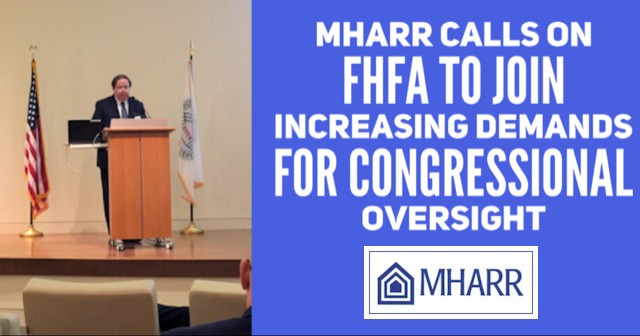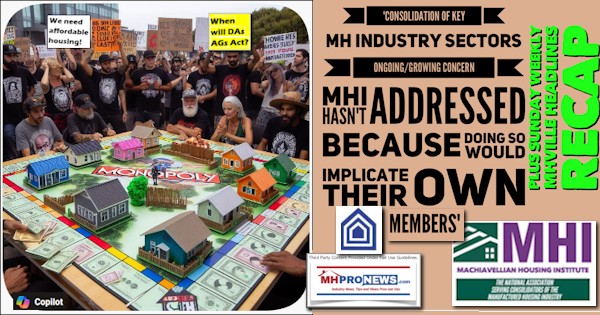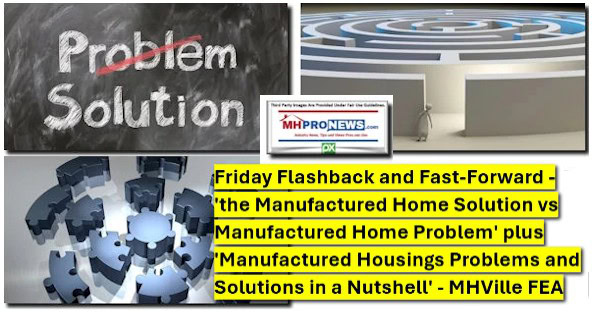
- “The federal laws governing manufactured housing have always been clear that HUD cannot use such evasions. The original Manufactured Housing Construction and Safety Standards Act of 1974 provides that Federal Manufactured Housing Construction and Safety Standards must be established “by order”…
- “The ultimate “nail in the coffin” for nearly two decades of institutional, deep-state HUD defiance of one of the most crucial reform provisions of the 2000 law… has been delivered…President Trump issued two Executive Orders (EOs), EO 13891 (“Promoting the Rule of Law Through Improved Agency Guidance Documents”) and EO 13892 (“Promoting the Rule of Law Through Transparency and Fairness in Civil Administrative Enforcement and Adjudication”), designed to eliminate a longstanding abuse which has seen particular misuse within the HUD manufactured housing program – the utilization of non-published, sub-regulatory “guidance” memoranda, “operating procedures” and other similar pronouncements, issued without notice and comment rulemaking, in order to change the obligations and responsibilities of regulated parties or to establish completely new de facto”
Those are pull quotes from the manufactured housing “Issues and Perspectives” shown below.
For those who have been waiting for the rule of law to dawn on manufactured housing, that daybreak may be approaching.
In the commentary that follows, Mark Weiss, J.D., President and CEO of the Manufactured Housing Association for Regulatory Reform (MHARR) explains why their Washington, D.C. based trade group’s staunch stance on several issues have been proven to be correct. By contrast, MHARR tags their larger rival across the Potomac River.
A few comments by MHProNews after MHARR’s article will follow.
MHARR — ISSUES AND PERSPECTIVES
By Mark Weiss
JANUARY 2020
“MHARR POSITIONS VINDICATED ONCE AGAIN”

The ultimate “nail in the coffin” for nearly two decades of institutional, deep-state HUD defiance of one of the most crucial reform provisions of the 2000 law – defiance that MHARR has consistently opposed, but has just as consistently gotten a “pass” from some in the industry — has been delivered, not surprisingly, by President Donald J. Trump. On October 9, 2019, President Trump issued two Executive Orders (EOs), EO 13891 (“Promoting the Rule of Law Through Improved Agency Guidance Documents”) and EO 13892 (“Promoting the Rule of Law Through Transparency and Fairness in Civil Administrative Enforcement and Adjudication”), designed to eliminate a longstanding abuse which has seen particular misuse within the HUD manufactured housing program – the utilization of non-published, sub-regulatory “guidance” memoranda, “operating procedures” and other similar pronouncements, issued without notice and comment rulemaking, in order to change the obligations and responsibilities of regulated parties or to establish completely new de facto requirements.

When the 1974 law was amended in 2000, Congress — in response to HUD enforcement abuses documented by MHARR — strengthened and expanded this safeguard. The 2000 reform law thus broke new ground in requiring not only notice and comment rulemaking for new or amended standards, regulations and Interpretative Bulletins, but also the prior submission of all such actions to – and consideration by – the newly-established Manufactured Housing Consensus Committee (MHCC). The 2000 reform law, however, went even further in its effort to end such abuses, by including a “catchall” provision in a totally new section 604(b)(6). That section requires that in addition to standards, regulations and Interpretative Bulletins, “any” HUD “statement of policies, practices, or procedures relating to construction and safety standards, regulations, inspections, monitoring, or other enforcement activities that constitutes a statement of general or particular applicability to implement, interpret, or prescribe law or policy” must be both submitted to the MHCC for prior consideration and subjected to notice and comment rulemaking. And, to put “teeth” into this requirement, the law states that any such change adopted without these procedures, is “void.”
It did not take long, though, for the HUD program, under former administrator William Matchneer, to mount an attack on section 604(b)(6), designed: (1) to limit its application and scope; (2) to subsequently read it out of the 2000 reform law entirely and, having accomplished that; to (3) revert to the type of “sub-regulatory” actions and practices that section 604(b)(6) was designed to ban and abolish in the first place. And while MHARR immediately and aggressively opposed each element of this attack, part of the industry sat on its hands as HUD, for almost a full decade, undermined this key reform.
The first attack came in May 2004 with a HUD opinion letter concluding that section 604(b)(6) – directly contrary to its clear language — rather than being a broad “catchall” provision, designed to bring most program activities within the scope of MHCC consensus review, was actually designed to limit the scope of that review to an extremely narrow category of HUD “statements on the construction and safety standards and [their] enforcement.” Then, in February 2010, Administrator Matchneer, not long before his departure from the federal program, published an “Interpretive Rule” which further slashed the scope of section 604(b)(6), to the point that it was rendered meaningless and effectively read out of the law. Again, MHARR strongly opposed this baseless action while others were mute.
The ultimate result of these HUD actions was a steady stream of sub-regulatory and pseudo-regulatory program actions, particularly following the appointment of Pamela Danner as program administrator. At least 14 pseudo-regulatory “guidance” memoranda were issued between 2014 and 2016 alone that imposed new and/or expanded mandates on HUD Code manufacturers. These were in addition to major changes to Subpart I-related “monitoring” several years earlier to change its entire focus from the detection of specific alleged standards violations to a broader concentration on “quality control,” implemented via unpublished sub-regulatory “operating procedures” and memoranda that were never considered or recommended by the MHCC.
The HUD program, consequently, has spent much of the past 20 years operating outside of the rule of law, in direct violation of its own authorizing statute, exercising authority it was never granted by Congress, in ways that were never authorized by Congress, while giving short-shrift to the statutory MHCC, all to the detriment of the industry – and particularly its smaller businesses – and the millions of Americans in need of affordable, non-subsidized home ownership.
Consequently, when President Trump issued Executive Orders 13771 and 13777 establishing a framework for the review and elimination of regulatory burdens that needlessly eliminate jobs or otherwise burden the national economy without delivering substantial countervailing benefits, and Secretary Carson, in turn, instituted a “top-to-bottom” review of HUD manufactured housing program regulations, MHARR, in comments filed in 2017 and 2018, immediately called, among other things: (1) for the retraction of all “guidance” memoranda issued by the program without prior MHCC review and rulemaking which imposed new or altered regulatory obligations and mandates; and (2) for the retraction of the 2010 Interpretive Rule which paved the way for the issuance of those “guidance” memoranda – and their enforcement against regulated parties – without the MHCC review and rulemaking required by the 2000 reform law.
And now, these longstanding MHARR positions have been directly imposed by the Trump Administration pursuant to EOs 13891 and 13892. EO 13891 thus provides: “Agencies may clarify existing obligations through non-binding guidance documents…. Yet agencies have sometimes used this authority inappropriately in attempts to regulate the public without following the rulemaking procedures of the [Administrative Procedure Act]. *** Americans deserve an open and fair regulatory process that imposes new obligations on the public only when consistent with applicable law and after an agency follows appropriate procedures. Therefore, it is the policy of the Executive Branch … to require that agencies treat guidance documents as non-binding both in law and in practice…. Agencies may impose legally binding requirements on the public only through regulations … and only after appropriate process….” (Emphasis added). EO 13892 further states: “Guidance documents may not be used to impose new standards of conduct …. The agency may not treat noncompliance with a standard of conduct announced solely in a guidance document as itself a violation of applicable statutes or regulations.
The ramifications of this policy for the manufactured housing industry, which is regulated under a statute that incorporates mandatory procedures for the adoption of standards, regulations and interpretations, as well as policies, procedures and practices, are – and will be — profound. The policy enunciated in EOs 13891 and 13892 proves and reiterates that the 2000 reform law means what it says about prior MHCC review and notice and comment rulemaking (i.e., the “appropriate procedures” referenced in the EOs) for all HUD actions specified in sections 604(a) (i.e., standards) and 604(b) (i.e., enforcement regulations, Interpretive Bulletins and changes to policies, procedures and practices affecting the standards, enforcement and monitoring).
The impacts of this policy, moreover, will be both retrospective and prospective. Retrospectively, it means that all HUD manufactured housing program “guidance” documents and similar “operating procedures” adopted since the effective date of the 2000 reform law without: (1) MHCC review and recommendation; and (2) notice and comment rulemaking as expressly required by the 2000 reform law are expressly denominated “non-binding” and unenforceable in violation of both Administration policy and underlying law. Thus, any action by HUD to enforce a supposed requirement enunciated solely in a “guidance” document or similar pronouncement would be subject to court challenge and invalidation. Even more important, prospectively, this policy means that HUD (at least through the remainder of the Trump Administration and possibly longer if endorsed by a subsequent administration and/or a court ruling), may not impose any new binding requirements on parties regulated under the manufactured housing program via “guidance” documents or other similar pronouncements which have not been previously considered and recommended by the MHCC and published for notice and comment. Effectively, then, within the federal regulatory system for manufactured housing, these Executive Orders overrule, sub silento, HUD’s illegitimate and unlawful 2010 Interpretive Rule and restore the express mandate of Congress as set forth in the Manufactured Housing Improvement Act of 2000.
This step, moreover, underscores the importance of an active and legitimate MHCC, and a fully-legitimate MHCC process which allows all interested parties to fully, freely and effectively participate in the discussion and resolution of all issues and matters within the scope of the MHCC’s statutory role. Increasingly, though (and particularly since the elevation of Teresa Payne from “Acting” program administrator to “program administrator”) such participation by non-members has been severely and with no legitimate basis whatsoever, limited, restricted or eliminated altogether by HUD edicts as HUD personnel, at the same time, have begun to exercise increasing control over virtually all aspects of MHCC meetings and procedures. Clearly, HUD – in direct violation of both the word and will of Congress – wants to return to the days of the spineless, bankrupt and worthless National Manufactured Housing Advisory Council, which was scrapped by Congress in the 2000 reform law and replaced with the MHCC, which was designed and intended to act as an independent, accountable bulwark against HUD bureaucratic abuse, but has been steadily emasculated and undermined by the Department.
It is time for this illegitimate and unlawful activity – which is directly contrary to the regulatory policies of the Trump Administration — to end in all of its various aspects. The October 9, 2019 Executive Orders are a good start toward returning the full rule of law to the HUD manufactured housing program. But there is more work to do, and MHARR will continue to press aggressively for a legitimate, lawful rulemaking regime at HUD which fully complies with the 2000 reform law, both substantively and procedurally.
Mark Weiss
MHARR is a Washington, D.C.-based national trade association representing the views and
interests of independent producers of federally-regulated manufactured housing.
MHProNews Analysis
One could sum up MHARR’s commentary on the above as “enforce the law,” and “the law means what it says.” Related building blocks for what Mr. Weiss said can be seen in the detailed related report below.
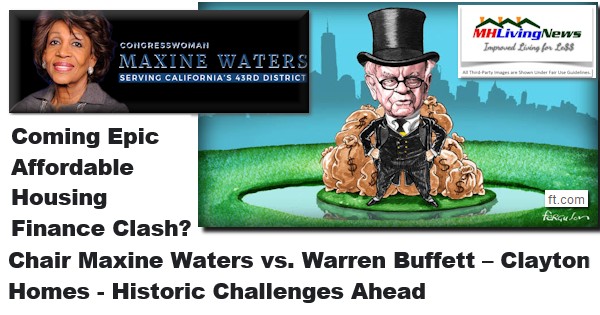
But we know that the key aspects of good laws that manufactured housing has on paper have gone under-enforced or unenforced. Examples of that are linked in related reports, above and below.
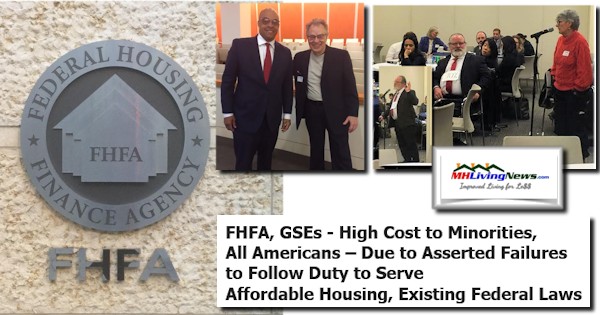
What MHARR CEO Weiss alludes to is at the heart of the fact- and evidence-laced, rip-roaring RFI provided to the federal government by our publisher, as is shown at the link here or as it is shown below.
No Title
No Description
MHProNews’ deep dive interview with Weiss is linked in the following report.
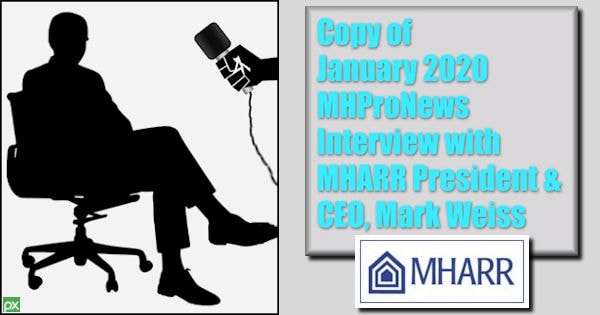
MHARR’s comments letter to the same White House Council RFI is also very detailed, and plows some similar but also distinctive ground from the Tony Kovach RFI linked above.
No Title
No Description
That’s a wrap on this exclusive installment of manufactured home “Industry News, Tips and Views Pros Can Use“ © – MHVille’s runaway #1 news source, where “We Provide, You Decide.” © (News, fact-checks, analysis, and commentary.) Notice: all third party images or content are provided under fair use guidelines for media. 
Submitted by Soheyla Kovach for MHProNews.com.Soheyla is a co-founder and managing member of LifeStyle Factory Homes, LLC, the parent company to MHProNews, and MHLivingNews.com. Connect with us on LinkedIn here and here.
